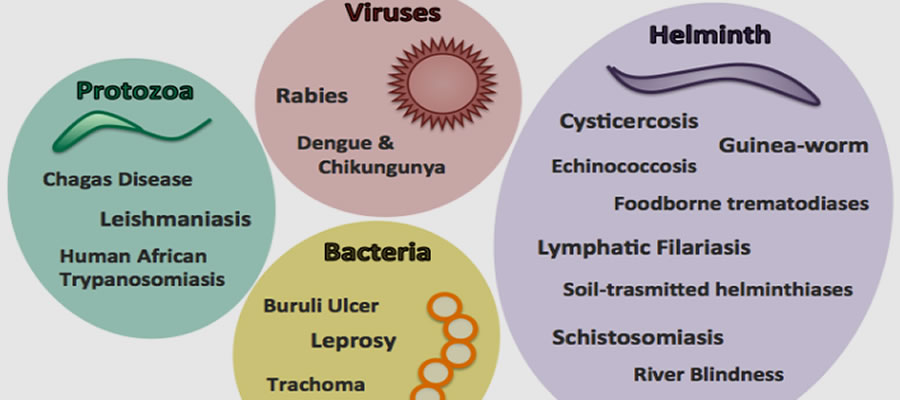

Economy
Population Distribution by Economic Activity
The district is dominated by the agricultural sector (Table 2.4). This sector employs about 73.5 percent of the working population. The proportion engaged in agriculture is high due to the fact that the district has a fertile soil which supports the cultivation of different types of crops, both cash and food crops. Also, the climatic conditions are favourable for crop production. This can also be attributed to the existence of big companies which process agricultural produce, especially palm nuts kernel into oil palm and also the existence of Agricultural Research Institutions both within the district and in adjacent and neighbouring districts. The existence of ready market for oil palm, cocoa and food stuff within and outside the district promotes agricultural activities in the district. The proportion of the active labour force engaged in the other sectors is indicated in table Table: 1.15 Structure of the District Economy of Akyemansa District
Source: AK3DA DPCU, 2015
The economic activities carried out in the district include primary (crops) production, animal husbandry, small scale industrial activities, small scale mining and commerce. The Akyemansa District is predominantly an agrarian district as about 73.5 percent of the entire labour force is into agricultural and its related activities. The population in commerce and services forms about 15.2 percent and 3.8 percent of the labour force respectively. Major Crops Grown, Farm Size and Crop Yield
The total area of land under cultivation in the district is about 45,124 hectares. This includes both the cultivation of cash and food crops. The total acreage of cash crops under cultivation in the district is about 65,098 hectares while the total land used in the cultivation of food crops is about 25,005 hectares. These cash crops include oil palm, cocoa and citrus. The food crops cultivated on large scale in the district are plantain, cassava, cocoyam, rice and vegetables. The various hectares of land used in cultivating the various crops are presented on table 8. Farming is generally done at a subsistence level with few exceptions in the case of those engaged in commercial farming. The average farm size for the district is estimated at 1.22 hectares. However, there are as many as 68 percent of families interviewed owning up to 3.25 hectares of farms. The farm sizes have a major effect on the income levels and poverty situations in the district as their output will be lower due to small farm holdings.
Table: 1.16 Hectares of Land under Cultivation and Output Levels
Source: DADU(Akyemansa 2015)
From table 1.9 above it could be realized that the district is doing well in the cultivation of the selected food crops. The average output of maize of 1.62 metric tons per hectare is higher than the national average of 1.4 metric tons per hectare. Most of the district averages are higher than the national averages except in the case of rice production.
1.8.1 Marketing of Produce
- Cocoa
Cocoa is widely produced in the district. It is produced and marketed by private farmers, but the marketing is done mainly through the Ghana COCOBOD and in recent times on a limited scale, through private cocoa purchasing companies. Purchasing cocoa by the COCOBOD is controlled through one depot which is situated in Oda. The marketing activities of the Oda District Depot extend to communities such as, Brenase, Kotokuom, Chia, Adwafo, Akokoaso, Asuboa, Bontodiase, Ofoase, Ayirebi, Oduamse, Gyewani, Besease, Kofi Nimo, Asabidie, Kwaboadi, Borteikrom, Moses, Mukyia, Otabil, Otwereso, Adwobue, Anyinase, Subinso, Gyaha, and their surrounding areas.
Oil palm is widely grown in Akyemansa District. It also grows wildly throughout the district. It is particularly dominant in gently sloping or low laying but well drained areas particularly those underlain by mixed soils of Kokofu series. The crop is cultivated and marketed by private peasant farmers. The farmers comprise those that are assisted by the Ghana Oil Palm Development Company (GOPDC) with Headquarters at Kwae Estate in the Kwaebibirem Municipal and Non-GOPDC assisted farmers. The former groups of farmers operate in communities such as, Nkwateng, Chia, Adwafo, Akokoaso, Boso Villa, Bontondiase, Ofoase Brenase, Kotokuom, and Dodoworaso in an out growers scheme. In all 1,222 farms which add up to about 26.34 square kilometres, have been registered under this scheme. Within the Akyemansa District, the Out growers scheme covers the Ofoase Zone. In recent times the company has extended its activities to other parts of the district. Also some of the oil palm produce are marketed through middle men and women in the district.
- Food Crops
Urban based middlemen and women play a very significant role in the distribution trade. Farmers often sell their produce at the nearest local market to middlemen who in turn sell at other urban markets such as Oda, Kade and Nkawkaw. Most of the farmers interviewed, however, sell their produce within the district. The food crops are marketed at centres such as, Ayeribi, Ofoase, Otwereso and Gyaha. The pricing of agricultural product is usually through haggling with the buyer, usually powerful middlemen, having the upper edge. The result is that farm prices are very low with the farmers earning low income for their produce. Paradoxically, middlemen selling the product of the farmer may earn more money in a month than a farmer in a year.
Farmers' limitation in accessing bigger markets, which can offer better prices for their produce, is still prevalent. Thus, returns to production for the farmers are low. This has the effect of reducing output as the farmer is not able to mobilize enough resources for agricultural production. Moreover, the farmer does not have the incentive to produce more because of the low returns. Farm produce pricing as well as distribution could be addressed by the farmers forming marketing co-operatives to collectively bargain with middlemen.
Post-Harvest Losses
The estimated is that, about 16 percent of all agricultural produce in the district go waste. This high figure is due to the inadequacy of storage facilities, lack of knowledge of storage chemical application and shortage of chemicals. There are a few storage facilities in the district. Most of the crops are stored using traditional methods. About 68 percent of the farmers store their produce especially cereals in cribans, 15 percent in the kitchens and the rest in small store rooms. The district lacks modern silos for storing produce. The absence of these facilities is hampering large scale agricultural production. Perishable goods such as tomatoes and garden eggs are often sold readily since there are no storage facilities for them. The percentage losses for the major crops are presented on table.
Table:1.17Post harvest Losses
The highest post-harvest losses are recorded for vegetables and citrus. This is due to the fact that storage facilities for these crops are not available in the district. Also, market for these products is lower in the district. There are no processing plants in and near the district to process these produce. As far as cereals storage is concerned, the Agriculture Extension Agents (AEAs) educated farmers on the use of Actellic Sumi Combi for treating cereals. This has improved the storage of cereals in the district to a large extent. In the case if citrus, the district should in conjunction with other institution set up processing plants for citrus and also provide cold storage facilities for the storage of vegetables in the district. Also the private sector should be assisted by the district assembly to set up processing plants to add value to the agricultural products in the district.
The level of post-harvest losses and the availability of market determine to a large extent the area under cultivation. It could be seen from the table above that the cash crops that have ready market have lower post-harvest losses and also have large tract of land under cultivation. It therefore means if there is ready market for the produce, then farmers can increase their investment in the sector so as to increase the production of crops.
Extension Services
Extension services are undertaken in the district to assist local farmers in increasing food production, and to transfer improved technologies to farmers. The services provided by extension agents include the dissemination of improved technology to framers; provision of practical on-farm training demonstration on crops and participatory learning farmer field schools. They also assist farmers in forming groups. They also carry out farm monitoring and evaluation activities. The district is sub-divided into four zones and 32 operational areas which are manned by frontline staff. Currently, there are seventeen (17) officers in charge of these zones and operational areas. Each frontline staff is expected to contact farmers in a month for the transfer of technology in respect of crops, livestock/poultry, agro-forestry, home science and agro-chemicals. This gives an estimated extension officer/farmer ratio of 1:1500. This is very high in comparison with the national average of 1:300. The poor nature of roads coupled with inadequate means of transport and logistics are hindering the extension service delivery in the district. With agriculture being the backbone of the economy of the district for now, more extension officers should be provided by the Ministry of Agriculture in conjunction with the Akyemansa District Assembly to be able to improve upon the ratio.
Electricity
The District main sources of lighting are electricity (mains) which provides light to more than half (56.1%) of the total number of households in the district. Kerosene lamp (27.7%) and Flashlight/Torch (14.6%) are the next key sources of lighting for the people of the district. Other lighting sources such as generators, gas lamps, solar energy, candle, firewood, crop residue and other sources constitute 1.6 percent. Higher proportions of households in urban areas (74.5%) have electricity as compared to (45.8%) households in the rural areas. Electricity (mains) is however the main source of lighting for rural localities in the district. Being a largely rural district, kerosene lamp is also widely used by a little more than a quarter of households but mainly in the rural localities (31.2%) compared to urban localities (21.4%). A higher proportion of the households that use flashlight/torch lights are in the rural areas (21.2%) of the district compared to urban (2.9%) areas. The other sources of energy are used by very small proportions of households.
On the main source of cooking fuel by households, a total of 78.3 percent of households in the Akyemansa district use wood fuel for cooking. A sizeable percentage of households (11.7%) also use charcoal. Wood fuel and charcoal are therefore the two main sources of cooking fuel for households in the district accounting for over 90 percent of fuel for household cooking. Gas is used by a small proportion (3.6%) of households, despite Government effort to promote the use of gas; there are still several households in Ghana who do not use gas. Additionally, negligible proportions of households in the district use electricity (0.3%) and kerosene (0.7%) for cooking.
There are no telephone lines currently servicing the population in the district. The district now has access to mobile telephone network with the availability of MTN, VODAFONE, and AIRTEL among other mobile telephone service. The postal system consists only of postal agencies, most of which are not functioning and one District Post Office thus giving an access rate of 15.6%. Delivery of mails is occasioned by long delays throughout the district. There are no delivery vans; hence there is irregular collection of mails from the nearest general post office at Nkawkaw, New Abirem and Oda.
- Financial Institutions
Currently, there are three financial institutions located in the district namely Akyemansa Rural Bank GN Bank and Akim Bosome Rural Bank. The main service points are Ofoase, the district capital, Ayirebi Abenase and Akokoaso who are providing financial services to the farmers, businesses and individuals.
Income Distribution
High inequalities exist in the distribution of income in the district. Using the Lorenz Curve (See Figure 4). The Gini-concentration coefficient was found to be 0.51, indicating a high inequality in the distribution of income (figure 1.8). The upper 20 percent of the population controls about 65 percent of the entire household income in the district. It also revealed that the lower 25% of the population enjoyed about 8% of the income in the district. Currently, a large proportion of the low income group is found in the agricultural sector. Apart from improving income levels, there is the need to also ensure a fair distribution of income.
Figure 1.8: Lorenz Curve showing Income Distribution
Food security
The district with an agricultural local economy has relatively food available for consumption throughout the year. The climate condition supports the cultivation of food crops and tree crops such as oil palm and cocoa. This favorable rainfall patterns and rich soil fertility influence the availability of food in the district.
Nutrition
Akyemansa district- Nutrition Unit’s Role in GHS Comprehensive Health Care
The nutrition unit of the Akyemansa District Health Directorate (DHD) continues to deliver services that would ensure the nutritional wellbeing of the inhabitants. Commitment towards success continues to drive sustained improvement in performance.
The key nutritional activities encompass growth monitoring and promotion activities, periodic micronutrient supplementation and health education. The key performance indicator is the nutritional status of children below the age of five (5) years. Child survival, growth and development begin in utero after fertilization as such maternal nutrition and wellbeing is implicated in the health of their infants. Nutritional wellbeing of people with communicable and non-communicable disease is also considered to ensure compliance to treatment and effective disease management. The table below indicates the trend of malnutrition for the district from 2015-2017
Trend of Malnutrition situation, 2015-2017
Source: Simple survey, DMHT, 2017
Date Created : 3/20/2025 3:16:15 AM








 facebook
facebook
 twitter
twitter
 Youtube
Youtube
 +233 593 831 280
+233 593 831 280 0800 430 430
0800 430 430 GPS: GE-231-4383
GPS: GE-231-4383 info@ghanadistricts.com
info@ghanadistricts.com Box GP1044, Accra, Ghana
Box GP1044, Accra, Ghana